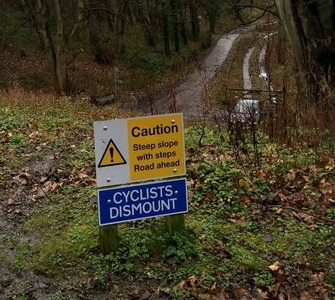OK, so you didn’t take the tram, or the underground, or the bus, or a taxi (also known as a cab). You didn’t cycle, you didn’t drive, you didn’t hop on a horse, and no, you didn’t fly in your Learjet either. You just went on foot. A lot of English learners use the expression “to go on foot” or “to come on foot”, meaning “to walk”, and they’re all totally 100% correct. However, most native English speakers don’t say this. We just use the verb to walk.
Vicky: How do you get to school?
Vincent: I walk.
Lucy: How did you get here?
Leo: I just walked. It’s a lovely day for it.
On foot has a slightly strange feel to me, as if you’re travelling through a dense, dark forest, and want to emphasise that you’re walking. If you really want to use on foot, however, I won’t stop you! Just make sure that you say on foot and not *on feet (yes, I know, English is completely illogical) and you never say *to walk on foot, which incorrectly combines the expression on foot with the verb to walk.
Right, now we’ve got that out of the way. But what if you want to say how you’re travelling right now? Do you say that you’re on the bus or in the bus? On a taxi or in a taxi? Deciding whether to use on or in confuses a lot of people, so but it’s actually pretty simple. For cars and taxis, you use in, and for everything else, you use on. The only exception to this rule might be a small boat such as a canoe, kayak or rowing boat – because you have to physically get into these types of boats, you’ll probably want to use in.
Some examples:
I’m on the train. We’re just about to go through a tunnel.
I’m on the bus now. There’s a lot of traffic tonight, so I’ll probably be a bit late.
I’m in Dave’s car. It was absolutely tipping it down so it was great that he picked me up.
I was having this discussion in a taxi heading downtown.
Another question you might be asking is whether you should use a or the. “On a train” or “on the train”? “In a car” or “in the car”? You can use either, but mostly you’ll want to use the, because you’ll be talking about a particular car (your dad’s blue Peugeot, say) or a particular train (the 7:40 train to York, for instance). The same is true for buses and planes. Taxis are a bit of an exception: you can call a taxi at any time and you never know what car you’ll get, so I would usually say that I was in a taxi.
I’ll finish Part 2 of this series by talking about entering and exiting various forms of transport, except we don’t use the words enter and exit. So what do we say? For entering we say “get on” or “get in”, and for exiting we say “get off” or “get out of”. These are all phrasal verbs, and the rules for them are easy. If we can be on it, we get on it and get off it. If we can be in it, we get in it and get out of it.
Some examples:
Get in the car!
I got off the train and walked to my friend’s house.
We got on the plane at nine but we didn’t take off until after ten.
We paid the driver and got out of the taxi.
There are also a few other words for entering and exiting that you might come across. A common one of these is the verb to board, meaning to get onto a boat, plane, train or bus:
Ryanair Flight 209 to Timișoara is now boarding at Gate 32.
We boarded a Greyhound at Pittsburgh. (Greyhound is a company that runs inter-city buses all over America.)
A slightly more fancy pair of verbs that you might hear occasionally are to embark, meaning to enter a ship or aeroplane, and to disembark, meaning to exit.
All passengers must disembark from the rear doors.
There are two more verbs you might see or hear from time to time. One of these is to alight, a relatively unusual verb which means to exit almost any sort of vehicle including a bike or a horse. The other is to dismount, which also means to get off, but can only really be used for bikes and horses.

If you don’t want to dismount just yet, here’s Part 3.



